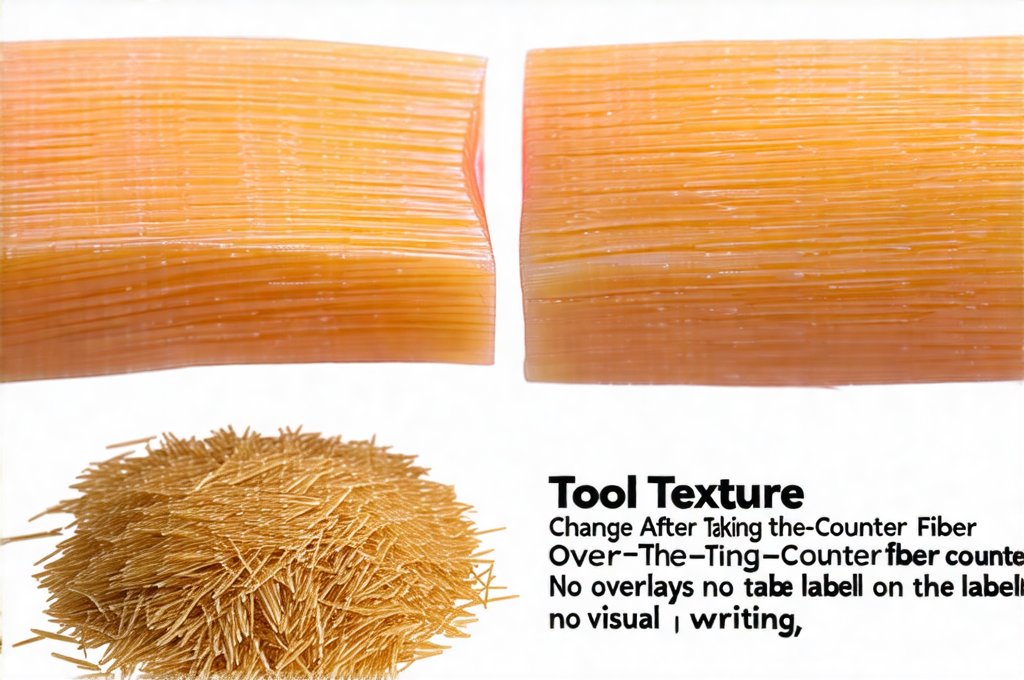Many people turn to over-the-counter fiber supplements hoping to improve their digestive health, regulate bowel movements, or simply add more bulk to their diet. While generally considered safe and beneficial, introducing fiber – even from seemingly innocuous sources like psyllium husk, methylcellulose, or wheat dextrin – often leads to noticeable changes in stool texture. These changes aren’t necessarily cause for alarm; they’re a common adaptation as the digestive system adjusts to increased fiber intake. However, understanding why these changes occur and what constitutes a normal range of variation is crucial for differentiating typical adjustment from potential issues requiring further attention. This article will delve into the various stool texture alterations experienced after starting OTC fiber supplements, offering insights into the underlying mechanisms and providing guidance on how to navigate this often-confusing aspect of digestive health.
Fiber’s impact on stool isn’t a simple one-size-fits-all phenomenon. It depends heavily on several factors including the type of fiber consumed (soluble vs. insoluble), the individual’s baseline diet, hydration levels, and pre-existing gut conditions. The expectation shouldn’t be for perfectly formed stools immediately; rather, anticipate a period of adaptation as your body learns to process this new addition. What begins as potentially looser or more frequent bowel movements often transitions towards more regular and comfortably formed stool over time, assuming adequate fluid intake is maintained. Recognizing the nuances of these changes can help you optimize your fiber consumption for maximum benefit.
Understanding Fiber’s Impact on Stool Texture
Fiber fundamentally alters how food moves through the digestive tract. Insoluble fiber, found abundantly in wheat bran and some vegetables, adds bulk to stool and speeds up transit time – essentially pushing waste through more quickly. This can be helpful for those experiencing constipation but may initially lead to a feeling of urgency or looser stools as the system adjusts. Soluble fiber, present in oats, beans, and psyllium husk, dissolves in water forming a gel-like substance. This slows down digestion, promoting feelings of fullness and helping regulate blood sugar levels. More importantly for stool texture, soluble fiber absorbs water, adding significant volume to the stool and softening it, which can prevent constipation.
The combination of both types of fiber is generally ideal for optimal digestive health. However, when you drastically increase your fiber intake – particularly with supplements – your gut microbiome (the collection of bacteria in your intestines) may need time to adapt. This adaptation process involves changes in bacterial populations and their ability to ferment fiber, which can temporarily lead to gas production, bloating, and altered stool consistency. It’s important to remember that the gut microbiome is incredibly individualistic; what works for one person might not work exactly the same way for another. If you suspect a deeper issue, follow-up testing tips after a diagnosis is made could be helpful.
Ultimately, the goal isn’t necessarily to achieve a specific “ideal” stool texture, but rather to find a balance where bowel movements are comfortable, regular, and don’t cause significant distress or disruption to daily life. Fiber supplements, when used responsibly alongside adequate hydration, are generally tools that help facilitate this balance.
Common Stool Texture Changes & Their Causes
The most common change people experience after starting OTC fiber is an initial softening of stools, sometimes leading to diarrhea-like symptoms. This occurs because the increased fiber content absorbs water from the colon, creating a larger volume and reducing stool firmness. This is particularly true with psyllium husk or other highly absorbent soluble fibers. It’s often accompanied by more frequent bowel movements as the digestive system attempts to process the added bulk. Don’t mistake this initial effect for negative; it is frequently a sign that the fiber is doing its job, especially if you were previously constipated.
Conversely, some individuals may experience constipation initially when starting fiber supplements. This seems counterintuitive, but can occur if they don’t simultaneously increase their water intake. Fiber needs water to function properly. Without enough fluids, the added bulk can actually harden the stool and make it more difficult to pass. Furthermore, a sudden large dose of fiber without gradual introduction can overwhelm the digestive system, leading to blockage or discomfort.
Beyond these initial changes, other common alterations include: – Increased gas and bloating: A byproduct of bacterial fermentation in the gut. Why you may feel bloated after taking supplements is a related concern for many. – Changes in stool color: Fiber itself doesn’t typically change stool color significantly unless combined with certain foods or medications. stool color and texture changes that may need testing can help clarify concerns. – Mucus in stool: Often a normal response to increased fiber intake as the intestinal lining produces more lubrication to aid passage. However, excessive mucus accompanied by other symptoms should be investigated.
Addressing Loose Stools After Starting Fiber
If you experience loose stools after beginning OTC fiber supplementation, the first and most crucial step is to increase your water intake. Aim for at least eight glasses of water per day, and potentially more if you are physically active or live in a warm climate. Spread your fluid consumption throughout the day rather than drinking large amounts all at once. This helps maintain adequate hydration levels within the digestive system.
Next, consider reducing the dosage of fiber supplement. Start with a smaller amount – perhaps half the recommended dose – and gradually increase it over several days or weeks as tolerated. This allows your body time to adapt without being overwhelmed. Pay attention to how your body responds at each increment.
Finally, evaluate the timing of your fiber intake. Taking fiber supplements with meals can sometimes help slow down digestion and reduce the risk of loose stools. Avoid taking large doses right before bedtime as this may lead to discomfort during the night. If diarrhea persists for more than a few days or is accompanied by severe abdominal pain, fever, or blood in the stool, consult with a healthcare professional.
Managing Constipation When Adding Fiber
Constipation after starting fiber supplements usually points directly to inadequate hydration. The same advice from loose stools applies here – drastically increase your water intake. However, beyond that, it’s essential to ensure you’re choosing the right type of fiber for your needs. While insoluble fiber adds bulk, soluble fiber is often more effective at softening stool and relieving constipation.
Another strategy is to gently stimulate bowel movements with light exercise. Activities like walking, yoga, or swimming can help promote intestinal motility. Avoid relying on laxatives as a long-term solution; they can disrupt the natural digestive process and lead to dependency. How to reintroduce fiber after GI illness is helpful when restarting after an upset stomach.
If constipation persists despite increased fluid intake and gentle exercise, consider incorporating other dietary changes such as adding more fruits and vegetables naturally rich in fiber. Prunes are well known for their natural laxative effect. Gradually increasing your fiber intake over time is key, and monitoring your body’s response will help you find the right balance.
Recognizing When to Seek Medical Advice
While most stool texture changes after starting OTC fiber supplements are temporary and benign, there are certain situations that warrant medical attention. Any significant or persistent change in bowel habits should be evaluated by a healthcare professional. This includes: – Blood in stool – even small amounts. – Severe abdominal pain that doesn’t subside. – Unexplained weight loss. – Persistent diarrhea lasting more than a few days. – Fever accompanied by digestive symptoms. – Nausea and vomiting alongside changes in stool texture.
These symptoms could indicate an underlying medical condition unrelated to fiber intake, such as inflammatory bowel disease (IBD), irritable bowel syndrome (IBS), or even infection. It’s always better to err on the side of caution and seek professional advice if you have concerns about your digestive health. If deep breaths cause discomfort, GERD and sharp pain after taking a deep breath could be contributing factors. Remember, this article provides general information and should not be considered a substitute for personalized medical guidance.


















